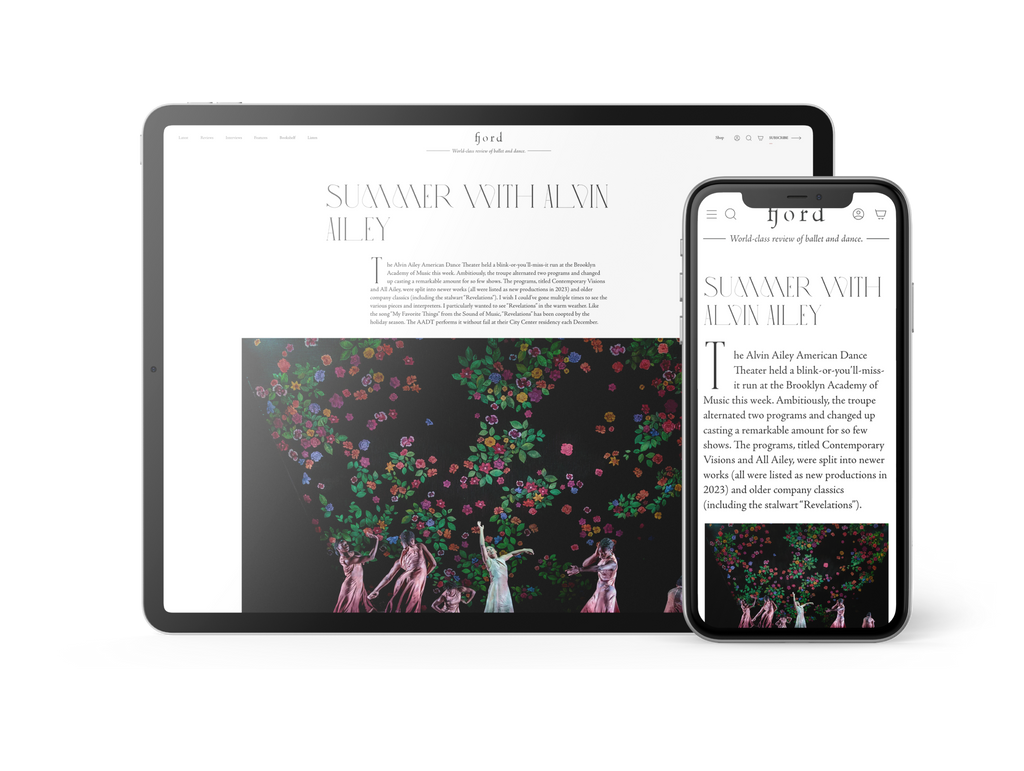Ryan Tomash Steps into a New Role
Back in October, New York City Ballet got a new cowboy. His arrival occurred in the final section of George Balanchine’s “Western Symphony.”
Continue Reading
World-class review of ballet and dance.
Chief executive and artistic director of Scottish Ballet, Christopher Hampson, has spoken of a desire to reimagine the classic fairytale as being a place populated by people who are “not defined by material things, or by who they have married.” Job done. It's an idiosyncratic, witty foray into scenes evocative of MGM's golden age, with a pinch of film noir at the start and an undercurrent of German Expressionism also thrown in, but moreover, his main remit is to weave a morality tale of eschewing worldly goods for inner beauty. The disparity between rich and poor is alluded to in the uniformity of movement within the cobblers at their production line, juxtaposed with the Hollywood fantasy of the Prince's court.
Performance
Place
Words

Scottish Ballet in Christopher Hampson’s “Cinderella.” Photograph by Andy Ross


“Uncommonly intelligent, substantial coverage.”
Your weekly source for world-class dance reviews, interviews, articles, and more.
Already a paid subscriber? Login
Back in October, New York City Ballet got a new cowboy. His arrival occurred in the final section of George Balanchine’s “Western Symphony.”
Continue ReadingWhen Richard Move enters from stage left, his presence is already monumental. In a long-sleeved gown, a wig swept in a dramatic topknot, and his eyes lined in striking swoops, the artist presents himself in the likeness of Martha Graham—though standing at 6’4, he has more than a foot on the late modern dance pioneer.
Continue ReadingPerhaps not since Mikhail Fokine’s 1905 iconic “The Dying Swan” has there been as haunting a solo dance depiction of avian death as Aakash Odedra Company’s “Songs of the Bulbul” (2024).
Continue ReadingDance, at its best, captures nuance particularly well, allowing us to feel deeply and purely. In its wordlessness, it places a primal reliance on movement and embodied knowledge as communication all its own. It can speak directly from the body to the heart, bypassing the brain’s drive to “make sense of.”
Continue Reading
comments